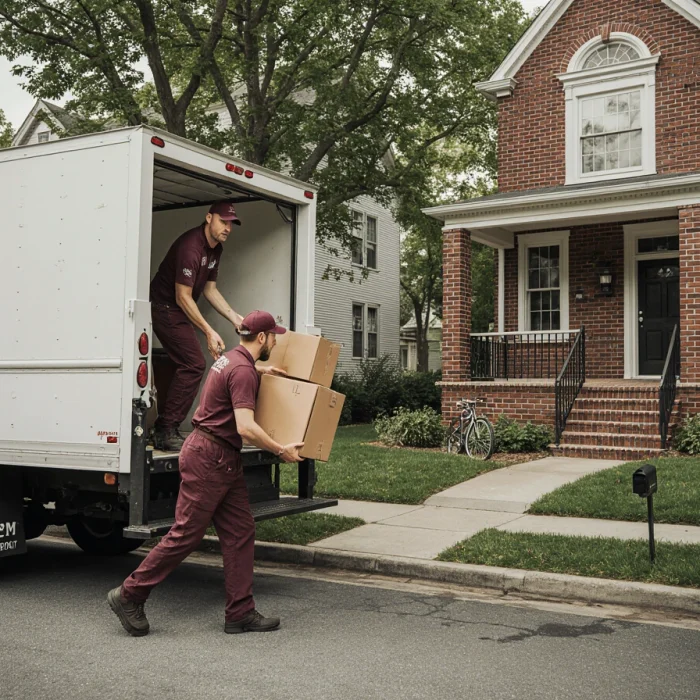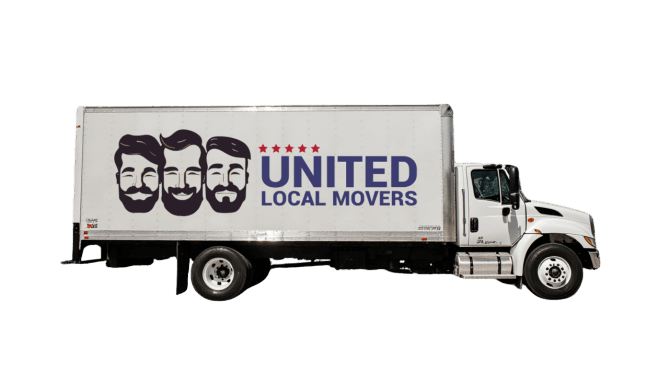Home > Interstate Moving > Moving to Pennsylvania > Moving to Scranton
Moving to Scranton
Scranton, Pennsylvania, famously known as “The Electric City,” has a population of about 76,000 and serves as the cultural and economic hub of northeastern Pennsylvania. Once a major coal mining and industrial center, Scranton has transformed into a welcoming city with affordable living, access to nature, and a strong sense of community. Known for its history, including its role in America’s industrial revolution, Scranton today offers a mix of small-city charm, affordable housing, and proximity to major metros like New York City and Philadelphia. Families, students, and retirees alike find Scranton appealing for its balance of affordability, culture, and accessibility.

Why More People Are Moving from Other States to Scranton
Scranton is attracting newcomers for its low cost of living, family-friendly neighborhoods, and proximity to larger cities. Families are drawn by affordable housing and good schools, while retirees appreciate the quiet lifestyle and medical facilities. Professionals value the city’s location, allowing for commutes to New York or New Jersey while enjoying affordable Pennsylvania living. Students are drawn to local universities like the University of Scranton and Marywood University. The city also benefits from easy access to the Pocono Mountains, offering recreation year-round.
Pros of Living in Scranton
Scranton’s advantages include affordability, access to outdoor recreation, and a strong sense of community. Housing costs are significantly below the national average, making homeownership accessible. Residents enjoy proximity to ski resorts, lakes, and trails in the Poconos. The city also has cultural attractions like the Steamtown National Historic Site, Electric City Aquarium, and local theaters. Its location offers convenient travel to New York City and Philadelphia without the higher costs of those metros.

Ready to get moved? Get a FREE quote now
Book your move easily and stress-free!
Cons of Living in Scranton
Challenges of living in Scranton include limited job opportunities compared to larger cities, with much of the economy centered around healthcare, education, and local services. Public transportation is modest, and most residents rely on cars. Winters are long and snowy, which can be difficult for some. Additionally, while the city has been revitalizing, parts of Scranton still face economic struggles and infrastructure challenges.

What Life is Like in Scranton
Life in Scranton is slower-paced, affordable, and community-focused. Families enjoy neighborhood parks, affordable housing, and family-friendly events. Professionals benefit from short commutes and the ability to travel to nearby metros for work or entertainment. Retirees appreciate the affordable cost of living, healthcare facilities, and quiet neighborhoods. Residents often spend weekends hiking in the Poconos, attending local festivals, or exploring downtown Scranton’s revitalized dining and cultural scene.
Living Costs in Scranton
| Category | Scranton | National Average |
|---|---|---|
| Housing (Rent per Month) | $1,000 | $1,570 |
| Utilities | $160 | $180 |
| Groceries | $310 | $330 |
| Transportation | $135 | $140 |
| Healthcare | $425 | $440 |
Scranton remains very affordable, particularly in housing, making it a popular relocation spot for families and retirees.

Ready to get moved? Get a FREE quote now
Ready to get moved? Get a FREE quote now
Schools and Education in Scranton
The Scranton School District operates numerous elementary, middle, and high schools, offering families a range of public education options. Charter and private schools are also available. The University of Scranton, a private Jesuit university, and Marywood University provide higher education opportunities, while Lackawanna College supports local workforce development. Education is a strong pillar of the community, attracting students from across the region.
Transportation and Getting Around
Scranton is primarily car-dependent, with limited public transit provided by COLTS buses. The city’s location near I-81, I-84, and I-380 provides easy access to New York, Philadelphia, and other Northeast destinations. While the city lacks passenger rail service, there are ongoing proposals to restore Amtrak connections to New York City. The Wilkes-Barre/Scranton International Airport offers domestic flights, providing convenient air travel for residents.

United Local Movers: Our Services
Relocating to Scranton is easy with United Local Movers. We provide professional moving services, including local and long-distance relocations, full packing, and secure storage. Our experienced team understands the needs of families, professionals, and retirees moving into northeastern Pennsylvania, ensuring a smooth transition. With transparent pricing and excellent service, United Local Movers is your trusted partner for relocating to Scranton.
Average Cost to Move to Scranton
| Move Type | Estimated Cost |
|---|---|
| Local Move (1-2 Bedrooms) | $950–$1,500 |
| Cross-Country Move | $3,600–$6,300 |
| Full Packing Services | + $300–$600 |
| Storage Options | $140–$260 per month |
Moving to Scranton is generally affordable, reflecting the city’s manageable size and cost of living.


How to Choose the Right Moving Company
When moving to Scranton, choose a licensed and insured mover with experience in Pennsylvania relocations. Look for companies that provide transparent pricing, strong reviews, and extra services like packing and storage. United Local Movers offers all of these qualities, ensuring a smooth and stress-free moving experience.
Final Thoughts
Scranton, Pennsylvania, offers affordability, community spirit, and access to both natural beauty and cultural amenities. While winters can be challenging and the job market is smaller than in larger metros, the city’s affordability and location make it an appealing option for families, retirees, and students. With United Local Movers as your trusted partner, your move to Scranton will be seamless, cost-effective, and the beginning of a rewarding new chapter in northeastern Pennsylvania.





